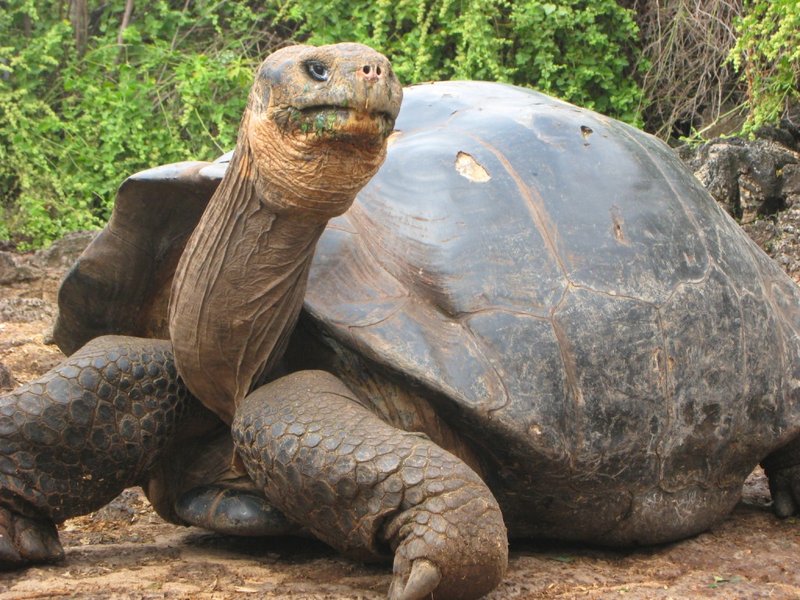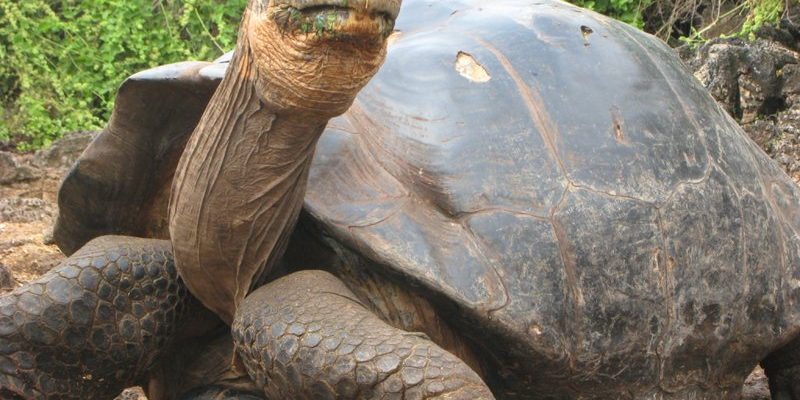
If you’ve ever wondered what makes the Galápagos tortoise so special, you’re not alone. Nestled in the unique ecosystem of the Galápagos Islands, these tortoises are not just fascinating due to their size; they are also key players in their environment. Let’s dive into the captivating world of the Galápagos tortoise and uncover some amazing facts that showcase their unique story.
1. The Largest Tortoise Species on Earth
You might be surprised to learn that the Galápagos tortoise can weigh up to 500 pounds and grow beyond four feet in length! To put that in perspective, think about a small car—these tortoises can be about the same length as a compact vehicle. Their massive shells serve as protective armor in their natural habitat, allowing them to live for over a century.
The sheer size of these tortoises is not just for show. Their hefty shells help them store water and energy during the long dry seasons, which can be a lifesaver when resources become scarce.
2. A Remarkable Longevity
On average, Galápagos tortoises live for more than a century, with some individuals reaching up to 175 years old! That’s longer than most people live. Their slow metabolism and the ability to go for extended periods without food or water contribute to their impressive lifespan.
Here’s the thing: imagine having a pet that could outlive generations of your family! It’s not uncommon for Galápagos tortoises to be passed down through families, much like a treasured heirloom. Their longevity is a testament to their resilience in a challenging environment.
3. The Role of Charles Darwin
When we think about the Galápagos tortoise, we can’t overlook the influence of Charles Darwin. His observations of these tortoises in the 1830s contributed to his theory of evolution by natural selection. He noted that different islands had distinct tortoise populations, with varying shell shapes that suited their specific environments.
This idea sparked a scientific revolution! Darwin’s findings helped to shape our understanding of how species adapt over time. So, the next time you hear about evolution, remember that the Galápagos tortoise played a pivotal role in that story.
4. Unique Adaptations for Survival
Galápagos tortoises are known for their unique adaptations, which help them thrive in their harsh environment. Their shells, shaped like domes or saddlebacks, vary from island to island—each designed to help them reach food sources.
For example, saddleback tortoises have elongated necks, allowing them to reach high vegetation. On the other hand, dome-shaped tortoises with shorter necks tend to inhabit areas with lower vegetation. This diversity is a fantastic example of how species evolve based on their surroundings, ensuring their survival and health.
5. A Vegetarian Diet
If you’re a fan of salads, then you might find a kindred spirit in the Galápagos tortoise. These gentle giants are strict herbivores, munching on grasses, leaves, and fruits. They particularly enjoy the prickly pear cactus, which provides hydration in their arid environment.
Their slow and steady grazing helps maintain the ecosystem by promoting the growth of plants and preventing overgrowth. Think of tortoises as nature’s lawnmowers, quietly keeping their environment in check one bite at a time!
6. Conservation Success Stories
Sadly, the Galápagos tortoise faced threats due to human activities like hunting and habitat destruction. However, conservation efforts in recent years have achieved great success.
Dedicated programs have focused on breeding tortoises in captivity and reintroducing them into the wild. These efforts have increased their population from just a few hundred to over 20,000 today! This is a classic example of how humans can intervene positively to protect endangered species.
7. The Importance of Their Habitat
The unique habitats of the Galápagos Islands play a vital role in the health of the tortoise populations. The islands have a wide variety of ecosystems, from dry scrublands to lush highlands. Each habitat supports different food sources and conditions vital to the tortoises’ survival.
Understanding the relationship between the tortoises and their environments helps researchers and conservationists protect these habitats. By preserving their homes, we ensure that the tortoises can thrive, showcasing the delicate balance of ecosystems.
8. A Symbol of Climate Change
With climate change affecting our planet, the Galápagos tortoise has become a symbol of the urgency to protect our environment. Their habitats are at risk from rising temperatures and changing weather patterns, impacting their food sources and living conditions.
Here’s the thing: by studying these tortoises, scientists can gain insights into how climate change affects ecosystems. This knowledge informs conservation strategies not only for tortoises but for all species at risk.
9. A Fascinating Mating Ritual
When it comes to romance, Galápagos tortoises have their own unique style. During mating season, male tortoises can get quite vocal! They engage in a series of deep bellows and grunts, trying to woo their potential partners.
Once they find a mate, the process can be surprisingly gentle and tender, despite their massive size. This behavior creates a fascinating dynamic in their breeding process, illustrating the complexities of tortoise relationships.
10. Cultural Impact and Tourism
The Galápagos tortoise has a significant cultural impact, drawing tourists from around the world. They offer a unique opportunity for visitors to connect with nature and learn about conservation efforts firsthand. Many tourists visit the islands specifically to see these incredible creatures in their natural habitat.
Tourism, when properly managed, can help fund conservation initiatives and raise awareness about the importance of protecting not just the tortoises, but the entire ecosystem.
In conclusion, the Galápagos tortoise is more than just a fascinating animal; it’s a living page of history and a vital part of the ecosystem. Understanding these amazing creatures helps us appreciate the delicate threads that connect all life on our planet. Whether it’s their unique adaptations, their role in the ecosystem, or the ongoing conservation efforts, there’s always something new to learn about these incredible tortoises. So the next time you hear about the Galápagos tortoise, remember that beneath that giant shell and slow gait lies a world of wonder and resilience.

